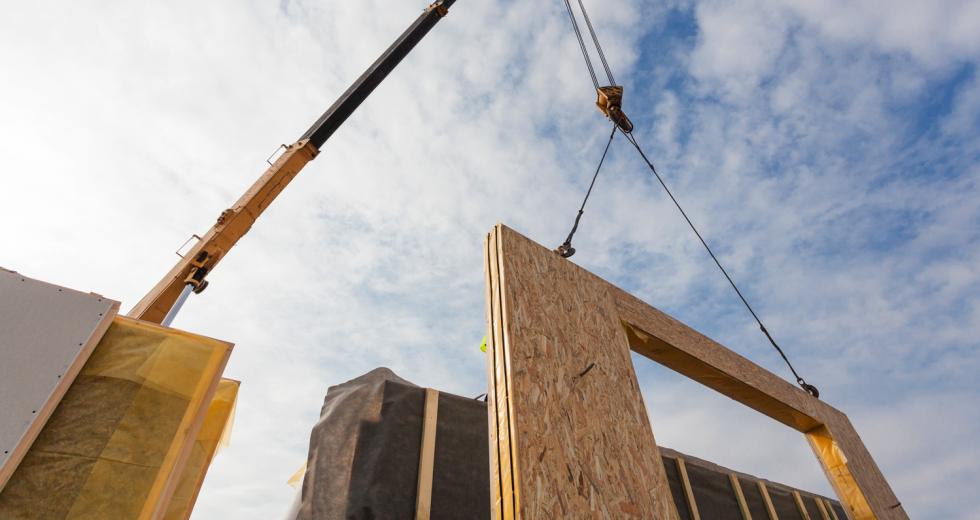With Californians paying some of the highest gasoline prices around, it is no surprise that fuel efficiency ranks as one of the top considerations for purchasing a new vehicle. Miles per gallon or “MPG” is the metric buyers use to estimate how much it will cost to fill up their tank for their daily commute. But transportation isn’t the only major purchase with long-term energy costs: homes have them too.
You would think that, given how much we spend on a new house — and how much we spend heating and cooling it — home shoppers would also want to know what kind of “MPG” they’ll get from a house.
Of course, historically, new homes didn’t come with any such data. You wouldn’t know if a home is efficient or leaky until you’ve got a year’s worth of utility bills to analyze. However, that dynamic is changing. Thanks to revised standards in the state’s Title 24 building energy efficiency codes, Californians are receiving better information about the performance of new homes through a metric called an Energy Design Rating. They’re also being introduced to a number of advanced energy-efficient building components now being offered as standard features by select homebuilders.
One of the most effective ways to increase performance is to “tighten” the envelope of the building by sealing any penetrations or gaps in the framing, increasing the insulation in exterior walls and attics. This requires a number of design changes, including using thicker framing and adding insulation to the roof and behind the stucco exterior. From the inside and outside, an untrained eye would never spot the difference. But below the surface, advanced materials work to keep the home at comfortable temperatures, especially during scorching summer days in the Central Valley. Savings on energy bills for such consumers can be substantial.
But bringing these innovations to market is not an easy task for homebuilders. It requires rethinking some of the common construction practices that contractors have relied on for decades. This is especially challenging given the shortage of skilled labor that has persisted in the industry since the Great Recession. Initiatives such as the California Energy Commission-sponsored Workforce Instruction for Standards and Efficiency program work to fill this void by offering contractors one-on-one training and education programs for high performance construction practices. The website for the program — for which I serve as program manager — also curates technical resources, training modules and case studies to keep builders ahead of the curve. WISE is funded by ratepayers through the Electric Power Investment Charge grant program.
In the Sacramento area, high performance envelopes are being offered as standard equipment in a 120-unit Natomas subdivision by Beazer Homes, a prominent national builder with a strong local presence. Every home Beazer builds meets or exceeds the most current Energy Star requirements, with a package of efficiency features that add up to roughly 35 percent greater efficiency than a new home built with traditional components.
Innovative materials — and the training required to incorporate them — do come at a cost. For consumers unfamiliar with this new paradigm, they too have a learning curve. They need to know whether the price tag will translate into long-term savings. Laura Stickelman, NorCal division president of Beazer Homes, says the savings absolutely add up, and often in unexpected ways.
“Owners of a new Beazer home will pay far less for heating and cooling compared to a typical resale home. They might save up to 30 percent on energy alone over a typical new home, and potentially more over an existing home,” Stickelman says. “We ensure Beazer homes are tighter than code, requiring extensive third party inspections on all installed energy efficient systems. A new home with this level of attention to the building envelope and efficient systems is simply going to last longer, require fewer repairs and provide excellent comfort all along.”
Among the unique features in Beazer’s Natomas subdivision is a High Performance Conditioned Attic system developed by Owens Corning. This netted and blown-in insulation system eliminates the venting traditionally found in attics and moves the insulation from the attic floor to the roofline, dramatically reducing attic temperatures in the summer and creating a more hospitable environment for HVAC equipment and ductwork to operate more efficiently throughout the year. The result is a more comfortable home with lower heating and cooling bills year-round.
Lessons learned from this collaboration will be observed by local energy efficiency experts involved with the WISE program and incorporated into future training that supports high performance attic adoption in other developments throughout California.
Whether they’re concerned about their carbon footprint or they just want to save money (or both), homebuyers now have more information and more energy-efficient options to choose from. And today’s homebuilders have access to better information and free training that will ultimately help California meet its ambitious conservation goals.



